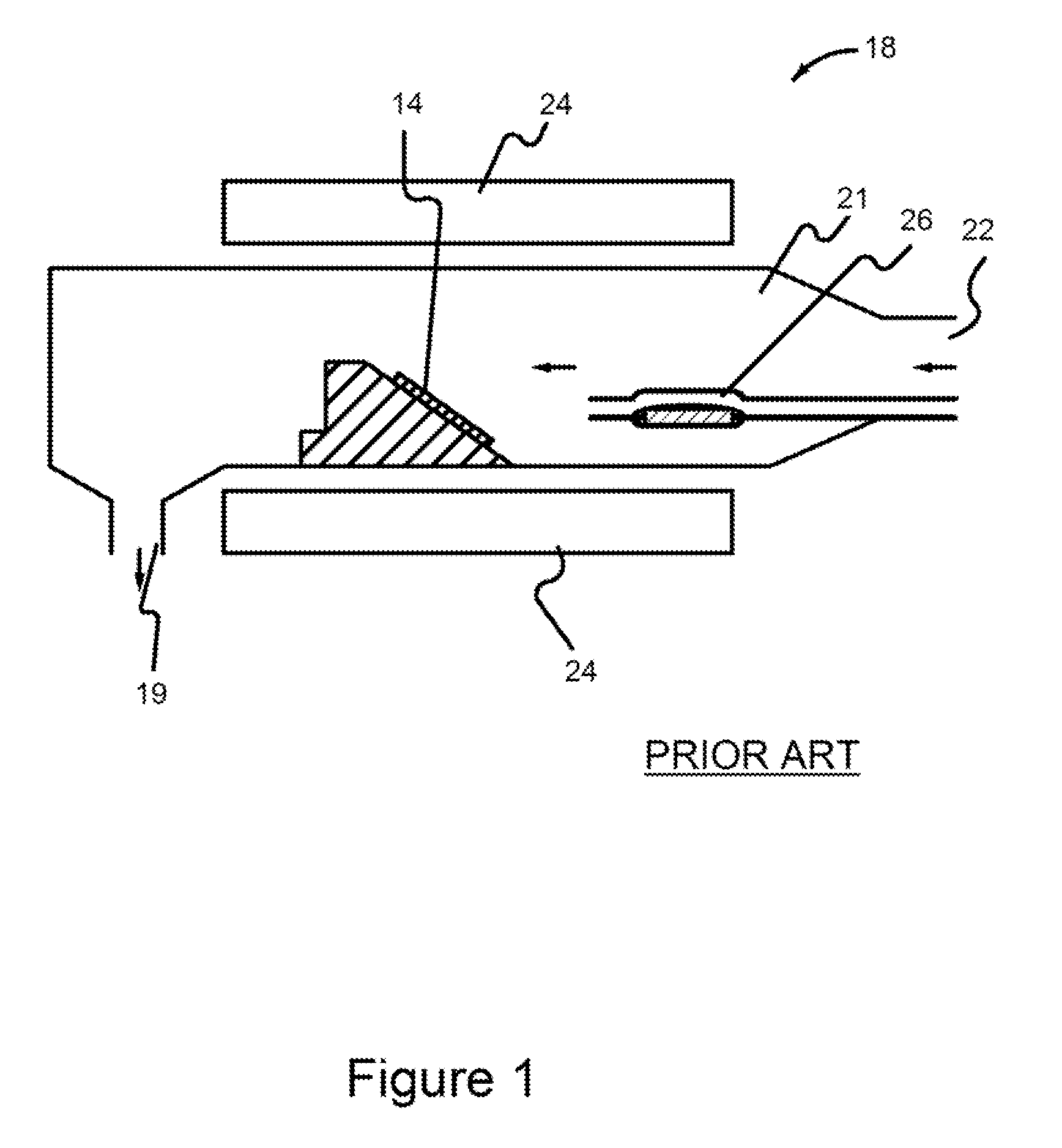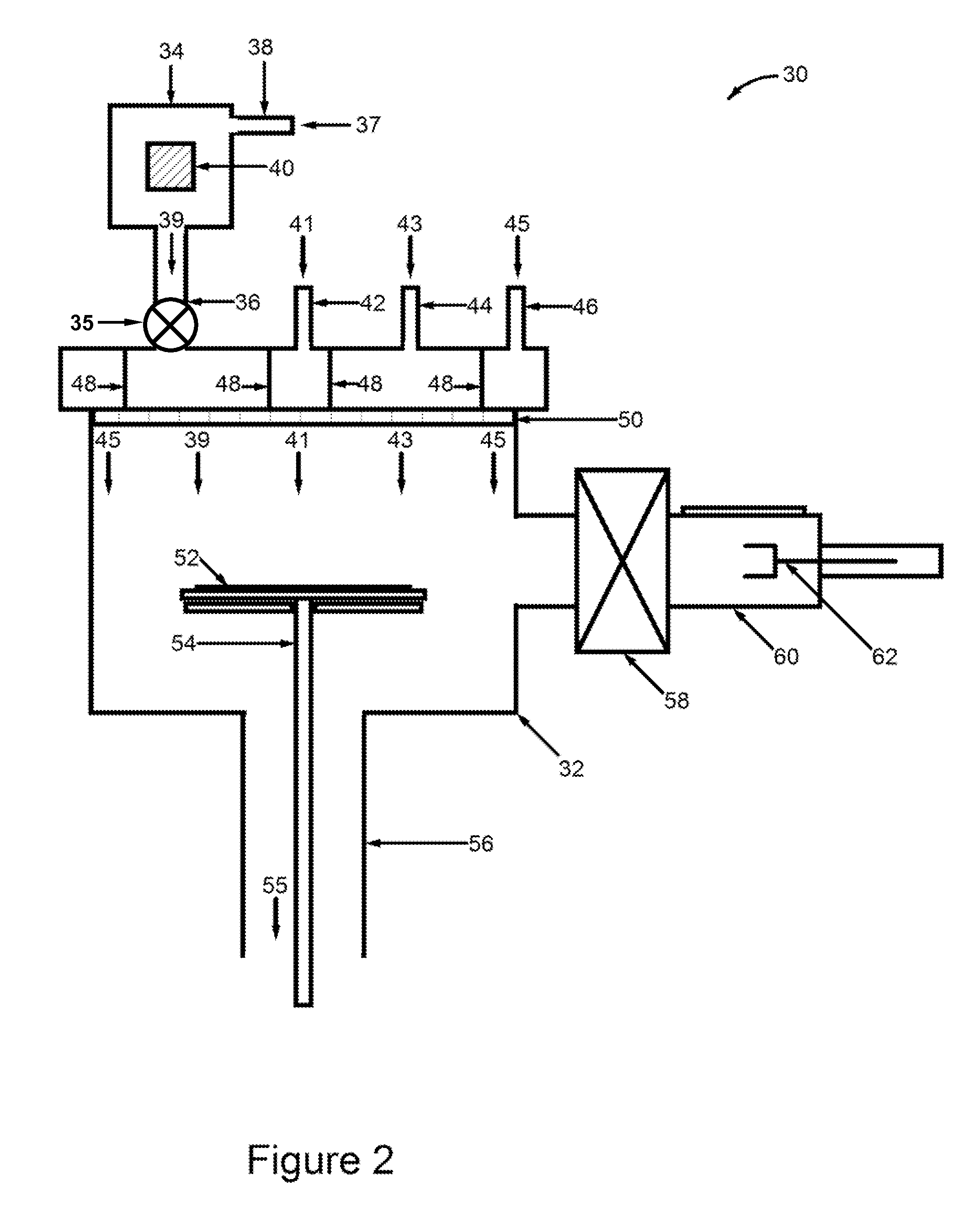Modern hydride vapor-phase epitaxy system & methods
a technology of hydride vapor phase and epitaxy, which is applied in the direction of crystal growth process, polycrystalline material growth, chemically reactive gas growth process, etc., can solve the problems of parasitic growth chamber wall deposits, inability to use gacl/sub>3/sub>3 for hvpe, and unattractive industrial applications, etc., to achieve uniform flow rate
- Summary
- Abstract
- Description
- Claims
- Application Information
AI Technical Summary
Benefits of technology
Problems solved by technology
Method used
Image
Examples
Embodiment Construction
[0031]Although the following detailed description contains many specific details for the purposes of illustration, anyone of ordinary skill in the art will appreciate that many variations and alterations to the following details are within the scope of the invention. Accordingly, the exemplary embodiments of the invention described below are set forth without any loss of generality to, and without imposing limitations upon, the claimed invention.
[0032]A modern design hydride vapor-phase eptiaxy (HVPE) deposition system capable of producing deposition on a commercial scale is described below. The design addresses and remedies problems with the HVPE technique that have limited its commercial implementation. The design of this HVPE deposition system is especially applicable to growth of III-V materials such as Ga(In,Al)As, Ga(In,Al)N, Ga(In,Al)P, and Ga(In,Al)Sb. The system design includes several aspects. A first aspect is a metal source that is external to the reactor and that incorp...
PUM
| Property | Measurement | Unit |
|---|---|---|
| operating pressure | aaaaa | aaaaa |
| operating pressure | aaaaa | aaaaa |
| temperature | aaaaa | aaaaa |
Abstract
Description
Claims
Application Information
 Login to View More
Login to View More - R&D
- Intellectual Property
- Life Sciences
- Materials
- Tech Scout
- Unparalleled Data Quality
- Higher Quality Content
- 60% Fewer Hallucinations
Browse by: Latest US Patents, China's latest patents, Technical Efficacy Thesaurus, Application Domain, Technology Topic, Popular Technical Reports.
© 2025 PatSnap. All rights reserved.Legal|Privacy policy|Modern Slavery Act Transparency Statement|Sitemap|About US| Contact US: help@patsnap.com



